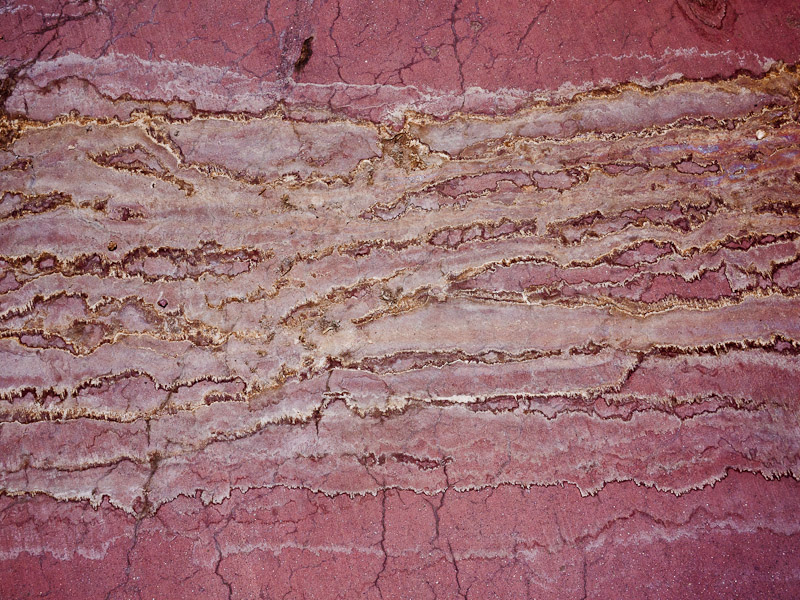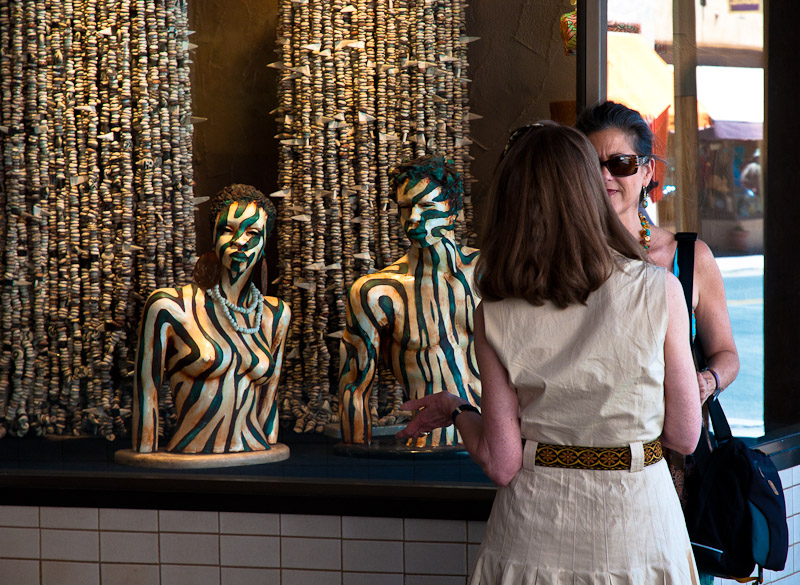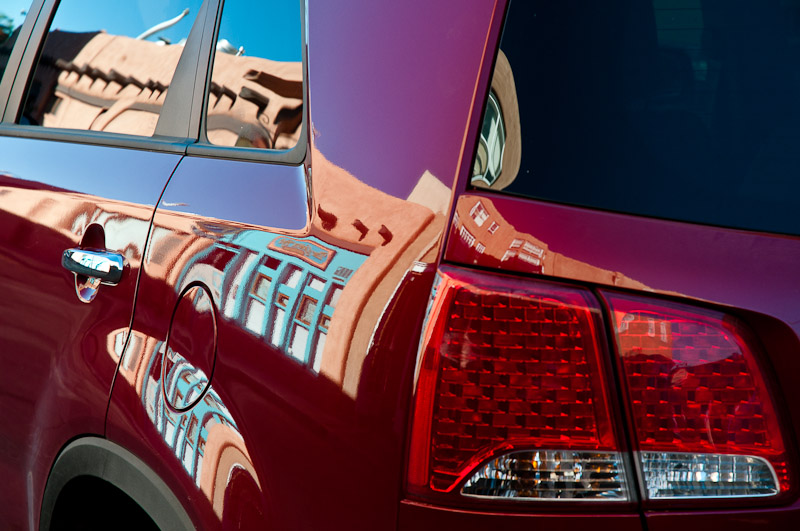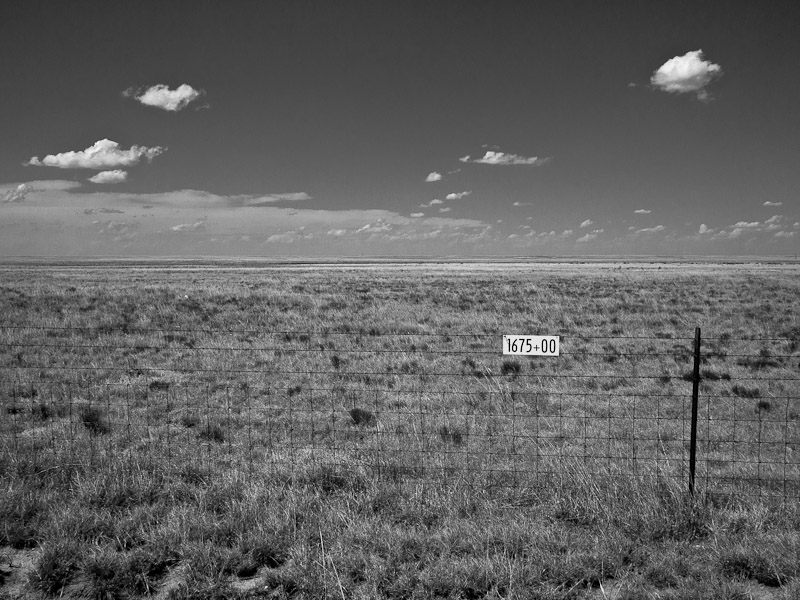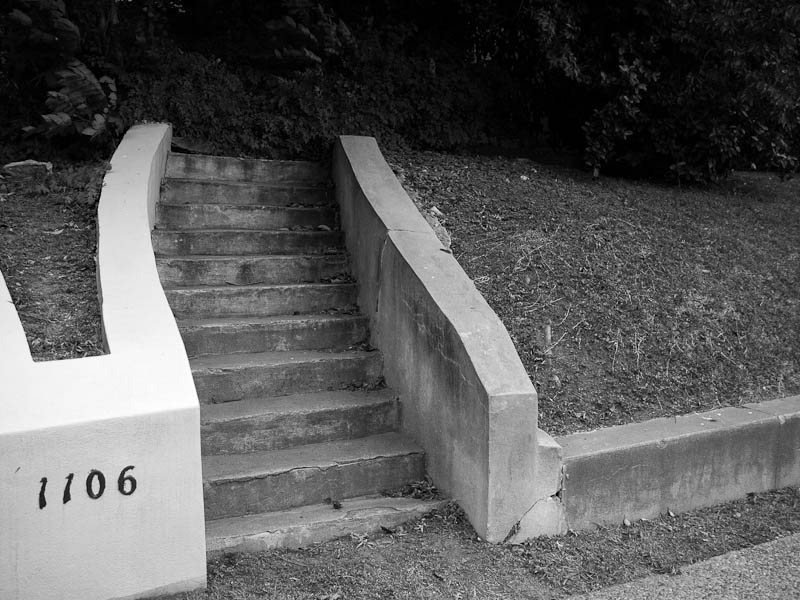Horses for Courses
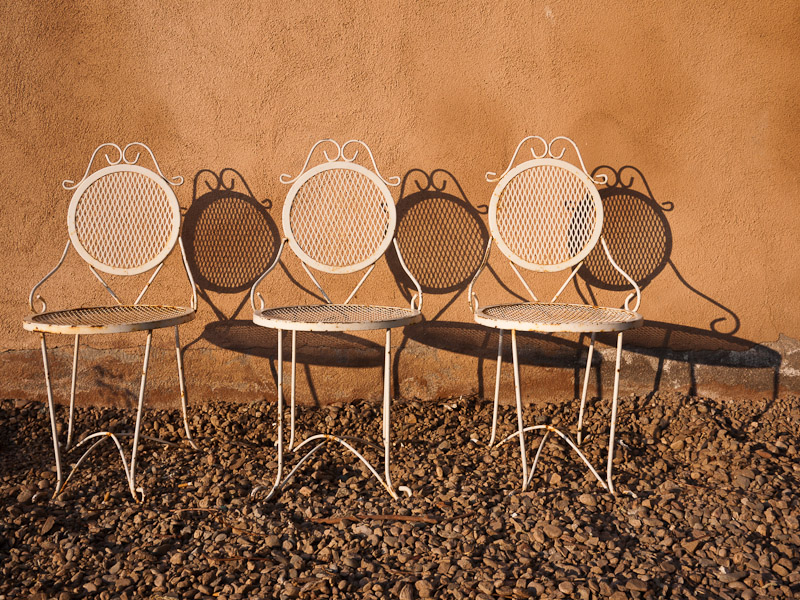
Three Chairs At the Taos Cow, Arroyo Seco - Panasonic GF1, 20mm, 1/160 f14
The Panasonic GF1 has been a companion for some eight weeks now; the initial “new toy” rush of daily use has settled into a more sustainable balance somewhere in between work and family. The tool has proved to be exactly what I hoped for: allowing images to be seen and collected in contexts in which I could not or would not carry a bulky SLR. Now on vacation, an anual parenthesis in which photography can be woven into my entire day, it has been interesting to observe how the GF1 juxtaposes with my Nikon D300 SLR; which camera I choose to carry for what and why.
It was the SLR that I selected in Santa Fe on Friday, where raising a camera causes no surprise to passers by, and when my sole purpose for the afternoon was to take photographs. Mounted with an 18-70mm zoom (27-105mm full frame equivalent) the Nikon had two important advantages over the GF1 for which my only lens choice is a 20mm standard: zooming to frame exactly the image I wanted and a crystal clear viewfinder. The zoom option is not a limitation of the GF1, just of my budget and my original purchase decision. As I described in my earlier Panasonic GF1 – Two Week Report blog post, I opted for the 20mm standard rather than the 14-45mm kit zoom precisely because I did not want to replicate my SLR outfit but wanted instead to force myself into a more restricted way of looking at the world. But the viewfinder, now that is a very real differentiator between the two machines.
The electronic view finder (EVF) of the GF1 is both a lifesaver and a limitation. As someone who must now wear reading glasses for anything closer than four feet from my face, the rear screen of the GF1 is not a practical option for composing photographs (even if I could get used to the idea of holding the camera out in front of me as if it smelled bad). The dioptric adjustment of the EVF lets me read the settings without having my glasses on – I could not use the camera without it. The EVF works, it gives all the information you need at a glance and it lets you frame your picture, but the resolution and dynamic range of the display is severely limited in comparison to that of the D300 optical reflex finder. With the EVF you can see the edges of your image, align the verticals, avoid the unwanted lampost growing out of someone’s head, but you can’t judge the colors or the details. The color contrast of the EVF is too great to allow the detail to be seen even if the resolution were better.
So, does the weak view finder mean that I will only be using the SLR for the duration of our New Mexico trip? Not at all. When driving across country, the main camera bag holding the SLR is in the back surrounded by boxes and bags; the GF1 is at hand in the front seat. When Tina and I go out for our final dinner for two before Saturday’s family reunion, it is the GF1 that is over my shoulder; easily carried and discrete. When, on Saturday evening, we walk the three blocks from our vacation rental to the world’s best ice cream cafe, the Taos Cow in Arroyo Seco, it is the GF1 that I instinctively grab on the way out of the house.
It was Katherine, my daughter, that called my attention to these chairs; she and her twin sister would both make excellant photographers if they just had the patience to learn an F stop from a bus stop. It was the GF1 that took the photograph. The Nikon could have done it just as well but not better; it would have intruded on our evening and bounced annoyingly on my hip when we walked. The GF1 was there when I needed it and not there when I wanted to just be with the family.
Howls of disagreement from fanatics aside, composing with a Leica rangefinder is appalling when compared to working with an SLR finder. That weakness did not prevent many if not most of the 20th century’s greatest photographs being made with a Leica. Just as with the Leica, the flaws of the GF1 finder are a consequence of the compromises necessary to create an otherwise exceptional camera; a camera that is the perfect horse for many courses.

